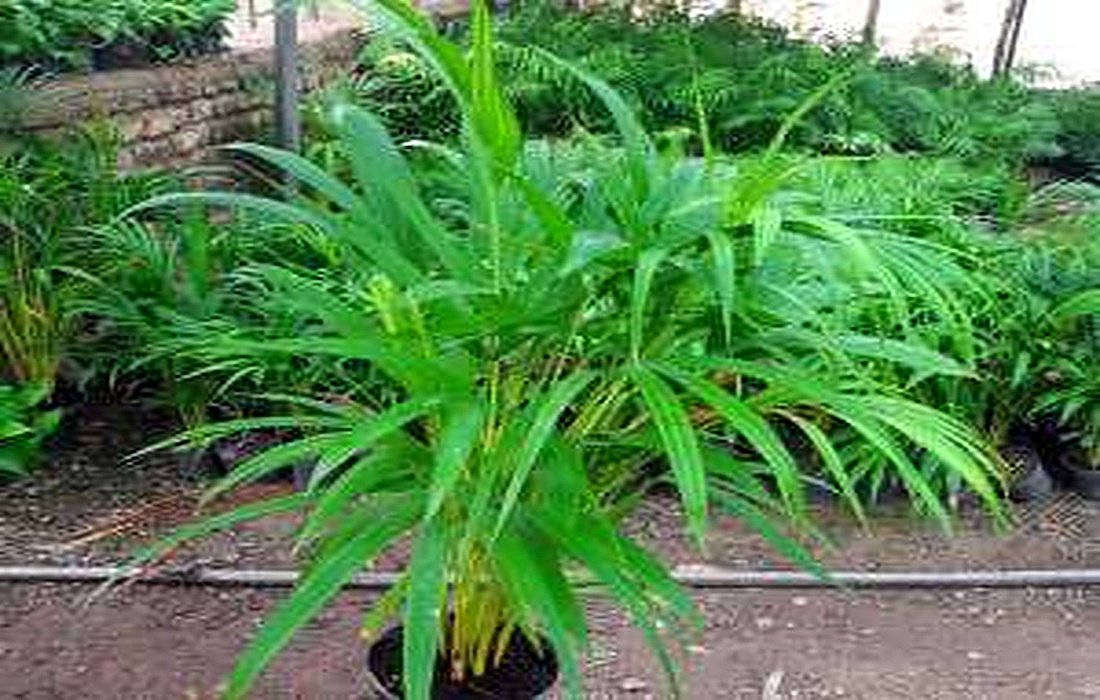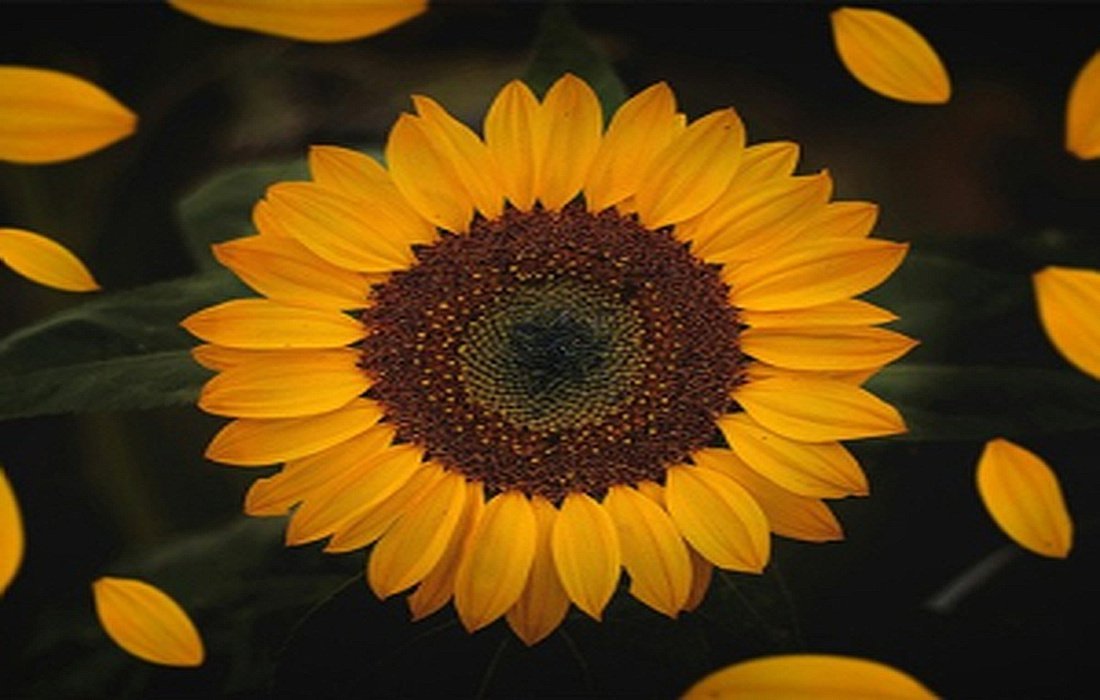Chamaedorea PalmAir-purifying and Detoxifying Plant
The Chamaedorea palm is one of the most popular house plants, effectively purifying the air and detoxifying indoor environments. Originating from Central America, this plant is favored for its adaptability to low light conditions, resilience to cooler temperatures, and its cluster of delicate, beautiful leaves.
Many Chamaedorea palms do not grow very large, and some varieties are quite small, making them suitable for dish gardens or pots. If you’re interested in growing this beautiful plant, continue reading.SelMagzJoin us to learn how to grow and care for Chamaedorea palm indoors.

How to Plant and Care for Chamaedorea Palm at Home
Introducing Chamaedorea Palm Botany
Chamaedorea palm species are numerous, characterized by their slender and delicate appearance, dark green leaves, and light stems, growing slowly.Date PalmThis palm resembles a date palm and is suitable for indoor cultivation due to its shade tolerance and low light requirements.
This palm is dioecious, meaning male and female flowers grow on separate plants. If conditions are favorable, flowers typically form at the end of summer or early fall.
If this plant fruits, the fruits are red-orange and are enjoyed as a delicacy in salads in Guatemala and El Salvador.
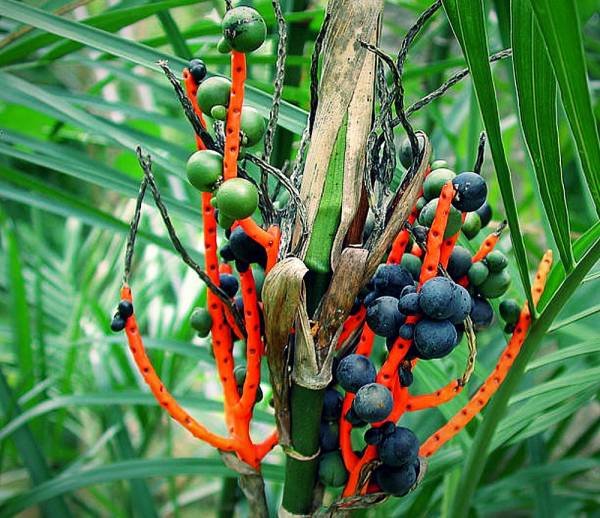
Colorful Chamaedorea Fruits
Lung Health Benefits from Keeping Chamaedorea Palm at Home
Light Requirements for GrowthChamaedorea Palm
This beautiful palm requires little light and thrives best in a bright environment with filtered light. A north-facing window is the ideal location for it.
WateringChamaedorea Palm
Like other palms, Chamaedorea should not be overwatered as it dislikes prolonged excess moisture. The saucer under the pot should be free of water, and the plant should not sit in a water-filled saucer. Allow the soil to dry somewhat before re-watering. It’s better to underwater this plant than to over-water it.
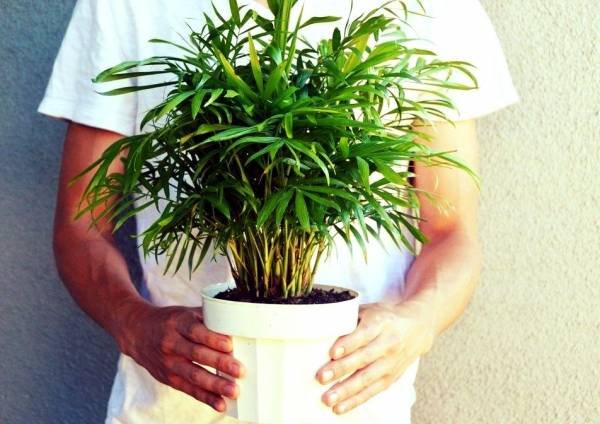
Instructions for Planting Chamaedorea Palm
Growing SoilChamaedorea Palm
Any quality potting soil is suitable for Chamaedorea, and it should only be replaced before it decomposes.
FertilizationChamaedorea Palm
Fertilize this plant once or twice a year during the growth season using a weak liquid fertilizer containing all essential nutrients. It doesn’t require much feeding but should not have fertilizer discontinued in winter.
Storage TemperatureChamaedorea Palm
The best temperature for keeping this plant is around 22 degrees Celsius.
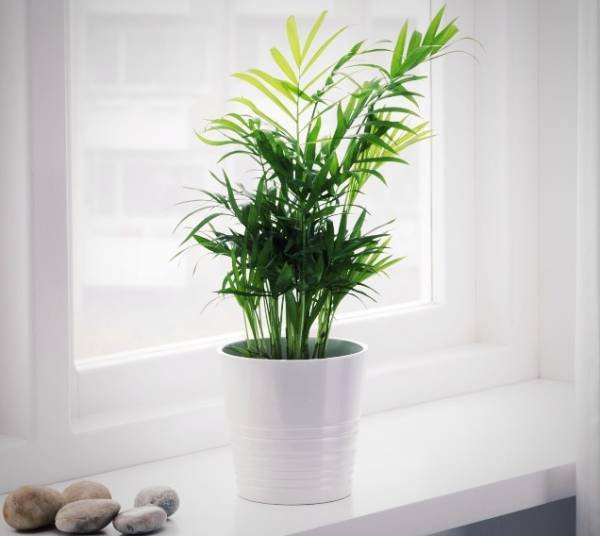
Optimal Temperature for Chamaedorea Growth
PropagationChamaedorea palm can be propagated by dividing clumps into two or more separate plants and potting them individually. Offsets near the mother plant can also be removed once they reach about 20 centimeters in height.
To separate offsets, gently remove the mother plant from the pot and cut the connecting area with a sharp tool, then plant them in a pot with more sand than the mixture used for the mother plant. After transferring to the new pot, water the offset and ensure that the top 5 centimeters of soil does not dry out between waterings.
Chamaedorea can also be propagated from seeds, but stem and leaf cuttings are not effective. If you want a new plant, it’s better to purchase a new Chamaedorea from a florist.
Propagation of Chamaedorea through seeds involves obtaining the seeds and planting them in a shallow pot filled with seed-starting mix, keeping them relatively moist until they germinate and grow.
How to Grow and Propagate Chamaedorea Palm
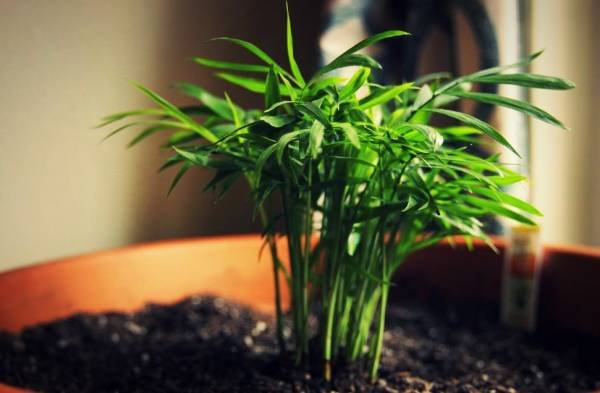
Pruning Chamaedorea Palm
When the plant matures, if old leaves become dry and shriveled, prune them with gardening scissors to keep your plant looking beautiful.
Repotting Chamaedorea Palm
Chamaedorea grows slowly, so a repotting is needed every other year.
This plant has a weak root system and limited growth, so be careful when propagating to avoid damaging the roots. If soil decomposition is observed and the soil feels spongy, remove the plant from the pot and change the soil if you don’t plan to repot.
When repotting, wait until the plant has grown sufficiently. If the current pot lacks space for further growth, allow the soil to dry out, then gently tap the bottom and sides of the pot until the plant easily comes out. Choose a pot that is one size larger than the current one and fill it with fresh soil before planting the plant.
Timing for Repotting Chamaedorea Palm
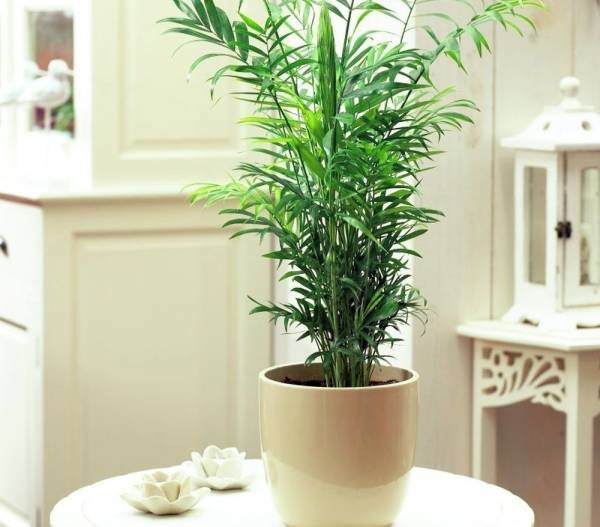
Side Effects of Chamaedorea Palm and Treatments:
Leaves have become pale and transparent:
Leaves turning pale can indicate a lack of light or nutrients.
You should relocate the plant to a brighter area and ensure it is properly fed.Leaf tips have turned brown:Brown tips on leaves may result from low humidity or a deficiency in potassium and calcium. This issue can also arise from irregular watering, so it’s best to use boiled water for watering.
What causes the browning of Chamaedorea leaves?Challenges in Caring for Chamaedorea PalmLeaves have turned yellow:
Yellow leaves may result from overwatering or inadequate light and heat conditions; it’s best to review these factors.Leaves won’t open:If the plant’s leaves are not opening, consider changing the pot size or soil, or use artificial feeding.
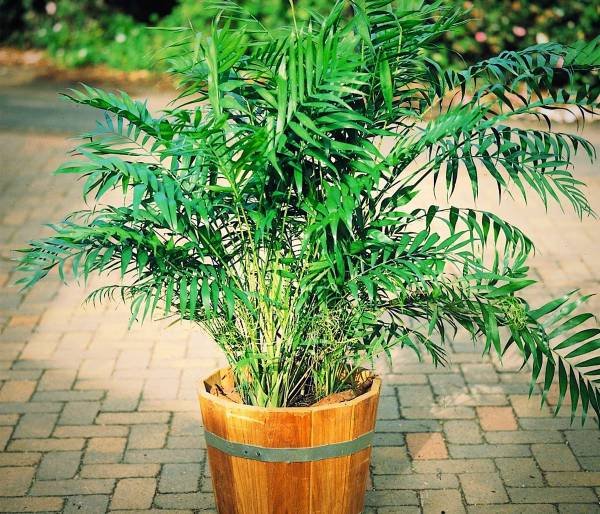
Leaves have spider webs:
If leaves have spider webs, this may indicate a mite issue, so consider spraying insecticide and increasing humidity with misting.
Changes in Chamaedorea Palm Leaves
Leaves have dried out:
The drying of Chamaedorea leaves is a sign of thirst, so water your plant!
Pests and Diseases:
Mealybugs, plant mites, especially spider mites, and snails are pests of this plant. Fungal and bacterial leaf spots, bacterial and fungal blights, as well as black stem and root rot are some of the plant’s diseases.
Chamaedorea Palm
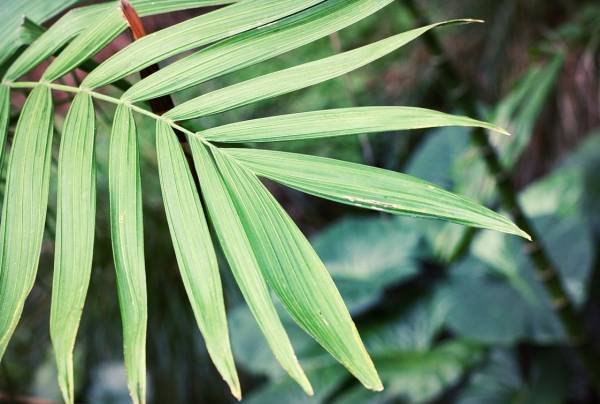
Benefits of Chamaedorea Palm
Fruits of Chamaedorea Palm
Fruit-bearing of Chamaedorea Palm
Air-purifying Plant
Growing Chamaedorea Palm



